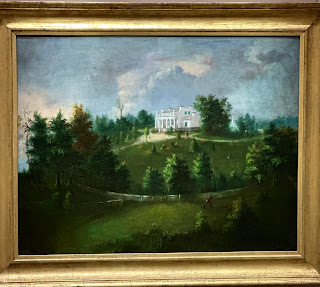The Significance of Religious Freedom in Mount Healthy's Early Settlers
Religious and political freedom played a vital role in the lives of early settlers in Mount Healthy. Many of these individuals held deep religious beliefs that shaped their daily lives and community interactions. Among them, German immigrants sought refuge from religious persecution and the political unrest plaguing their homeland. Consequently, local Lutheran, Methodist, and Catholic churches conducted services in German, a practice that persisted until the World War I era when anti-German sentiment rose.
In 1826, the Mount Pleasant Union Meeting House was founded as a welcoming space for all denominations, embracing the principle of "the use of all denominations and the exclusion of none." The first congregations to utilize the meetinghouse were Presbyterians, United Brethren, and Lutherans. Over time, as these small groups of worshipers expanded, they eventually built their own churches. By 1853, the majority of these congregations had transitioned into their own church buildings, contributing to Mount Healthy's skyline, characterized by a multitude of church steeples.
The Church of the Assumption congregation, meanwhile, gathered in nearby Catholic churches until their community grew large enough to warrant constructing their own place of worship. While several of the churches organized at the meetinghouse continue to exist today, others, such as the African American church and the Presbyterian church, have since disappeared. Notably, the Mount Pleasant Presbyterian Church ceased operations in 1874 after numerous Presbyterians migrated closer to the newly established College Hill Presbyterian Church.
Throughout its history, the meetinghouse also hosted a variety of other religious groups, including Christian Connection, Swedenborgians, Restorationists, Unitarians, Universalists, Old School Baptists, Mormons, and Quakers. However, many members of these groups eventually moved on to join other churches and communities.
Early Mount Healthy pioneers were frequently laid to rest in family plots on their farms. The city is home to several cemeteries, with the Hoffner Graveyard once serving as the yard of the United Brethren Church. The Steward Graveyard eventually transformed into the Mount Pleasant Cemetery, featuring three distinct sections: Protestant, African American, and St. Mary Catholic. Additionally, the Arlington Memorial Gardens, opened in 1932, remains an active burial place for Mount Healthy residents.
Although this chapter primarily examines the earliest churches in Mount Healthy, it is crucial to recognize that numerous young and thriving churches continue to shape the area's spiritual landscape. The ongoing diversity of religious beliefs in and around the community serves as a testament to the enduring importance of religious freedom in Mount Healthy's rich history.
"Aunt Sallie" LaBoiteaux, as she was known, was a lifelong member of the Mt. Healthy Christian Church. For over 50 years, she taught primary age boys in Sunday school. On her 86th birthday, her boys sent postcard greetings from around the world. She was the daughter of early pioneers Ben and Mary (Gogin) Runyan and the wife of Frederick LaBoiteaux, whose grandfather plotted Mount Pleasant in 1817.












